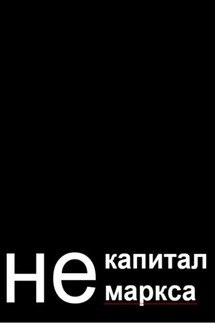The General Theory of Capital: Self-Reproduction of Humans Through Increasing Meanings - страница 20
Biologists studying a minimum genome that would allow organisms to exist and reproduce assume that such a genome consists of 256 active genes (Hutchison et al. 2016). In nature, the bacterium mycoplasma genitalium has the smallest known genome among self-reproducing organisms—525 genes. The human genome contains 20,000 to 25,000 active genes. To date, there is no research on the minimum set of meanings that would trigger cultural evolution. Human culture began with a scanty set of primitive meanings, perhaps with a few simple tools, causal mini-models and an elementary tongue. However, by the time when Ötzi lived 5,300 years ago—a man from the Copper Age whose mummy and personal effects were discovered in the Alps in 1991— the meanings had multiplied to the point that a multi-story museum building is required to store and research them. And modern human culture is an immense accumulation of meanings that would require an encyclopedia of thousands of volumes to describe.
Simple consumption and unfolding of needs
The accumulation of meanings begins when proto-humans transform their habitat into a means and adapt it to their needs. The accumulation of meanings, in turn, leads to the unfolding of needs (Korotaev 2003, pp. 32-3). The unfolding of needs implies, first, that animal needs become more cultural and, second, that new more cultural needs emerge. Above, we called this transition the “needs trap” with which human history began. “…The satisfaction of the first need, the action of satisfying and the instrument of satisfaction which has been acquired, leads to new needs; and this creation of new needs is the first historical act” (Marx and Engels 1975-2004, vol. 5, p. 42). In this transition, not only animals but also their needs are transformed into a mixture of life and meaning.
The unfolding of needs initially takes place within the framework of cultural selection. As humans advanced from cultural selection to choice, the satisfaction of needs unfolded into a meaningful process of consumption, that is, an increasingly targeted appropriation and elaboration of the material of nature. Traditional/simple consumption is based on the gradual expansion of the domus, the cultural niche of humans within the natural environment. Primitive people are still firmly embedded in nature and follow its rhythms:
“Close observers of hunter-gatherer life have been struck by how it is punctuated by bursts of intense activity over short periods of time. The activity itself is enormously varied—hunting and collecting, fishing, picking, making traps and weirs—and designed in one way or another to take best advantage of the natural tempo of food availability. ‘Tempo,’ I think, is the key word here. The lives of hunter-gatherers are orchestrated by a host of natural rhythms of which they must be keen observers” (Scott 2017, p. 88).
As the domus expanded, a cultural rhythm of its own evolved. The nomadic life of hunters and gatherers gave way to the more settled life of farmers. Technological changes, which were very slow, were accompanied by equally slow changes in organization and psychology. Tribes became chiefdoms and chiefdoms became states. Fetishism and animism were augmented, though not superseded, by totemism and polytheism.
The more meaningful consumption is, the more the needs are cognitively represented as values. Emotional behavior is gradually supplemented by traditional behavior as a prelude to rational action. “The line between meaningful action and merely reactive behavior to which no subjective meaning is attached, cannot be sharply drawn empirically. A very considerable part of all sociologically relevant behavior, especially purely traditional behavior, is marginal between the two” (Weber 1978, pp. 4-5).







